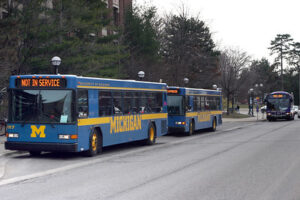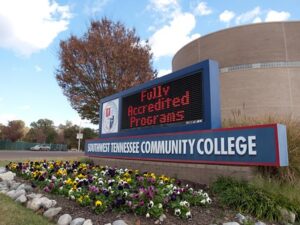Michigan Advance published an interesting OpEd last week regarding the decline in university enrollment in the State of Michigan. Most four-year universities in Michigan experienced declining enrollment. Only the University of Michigan and Michigan State University saw increases. The writer attributed the state’s overall declining enrollment to a few things:
- COVID-19
- A lack of interest in higher education
- Parents refusing to release tax returns to the Department of Education
- Politics
- The cost of attendance, which has increased due to state disinvestment in education
- The availability of jobs that do not require a college degree
Another possibility is that the Futures for Frontliners program – which provides free community college tuition to eligible Michigan residents – may have siphoned off some student who might otherwise have enrolled in a four-year institution. Fall enrollment at Michigan’s community colleges rose in 2021, falling only about 7,500 students short of pre-pandemic levels.
All of these reasons (or none of them) could explain the overall decline, but the truth is probably more nuanced. COVID-19 may have caused high school graduates to change (or delay) their educational plans, but growing evidence suggests other explanations for declining enrollment. The cost of attendance places huge limits on what students can do.
In the four decades between 1970 and 2010, the number of adults living in middle class households declined by 10%. But there are two ways to exit the middle class: you can move either up or down.
Between 1971 and 2016, the percentage of upper income US households increased from 14% to 19%. During the same period, the number of lower-income households increased from 25% to 29%. In other words, marginally more middle class households moved up than moved down.
Directed financial aid can reverse declining enrollment
It’s true that fewer middle class parents have the resources to send their children to college. It’s also true that 4-year college attendance costs rose by nearly 2,700% at public institutions. (During that time, the cumulative rate of inflation was 631%.) So, the responsibility for paying for tuition and fees may land heavily on the students themselves. That’s probably the biggest contributor to declining enrollment.
Regardless of why fewer high school graduates are pursuing higher education, employers still need highly educated workers. The OpEd author points out the recent interview with Ford CEO Jim Farley, who said bluntly that Ford does not currently have the talent it needs to get where it wants to go.
Michigan’s free community college programs proved unequivocally that the State can strongly influence college enrollment. Funding programs that merely help students attend school isn’t a complete solution. State aid to students needs to be biased toward certain fields of study. Directed scholarships and grants that pay for students to enter STEM, healthcare, teaching, trades, etc. will do wonders to entice prospective students to enter these fields. (The corollary is restricting funding for programs that do not address the State’s specific workforce and economic development needs.)
But the four-year universities cannot fall into the trap that the state’s community colleges find themselves in. It is not the role of higher ed at any level to train workers as a form of corporate welfare. (Remember, most businesses fail within 15 years.) Higher education institutions have a primary obligation to return lifelong value to their students. They also have a significant obligation to meet the economic development needs of the state. They do not have to provide narrowly tailored training for employers with no desire to invest in their workforce.
Photo Credit: WoodleyWonderWorks , via Flickr




























